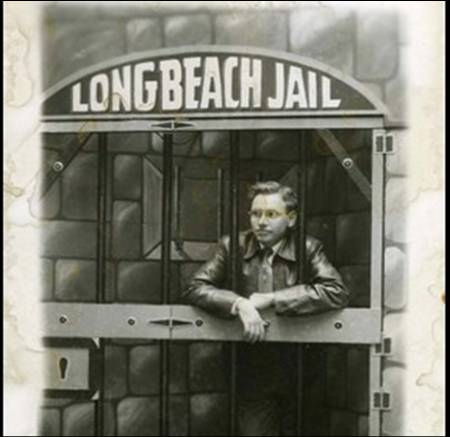Below is a continuation of portfolio management highlights from Howard Marks’ recent book, The Most Important Thing: Uncommon Sense for the Thoughtful Investor, Chapter 3 “The Most Important Thing Is…Value”:
For anyone who has purchased a security too soon while the price continued to decline, I would highly recommend reading the last few pages of Chapter 3 in its entirety.
Intrinsic Value
“To value investors, an asset isn’t an ephemeral concept you invest in because you think it’s attractive (or think others will find it attractive). It’s a tangible object that should have an intrinsic value capable of being ascertained, and if it can be bought below its intrinsic value, you might consider doing so. Thus, intelligent investing has to be built on estimates of intrinsic value. Those estimates must be derived rigorously, based on all of the available information.”
“…the best candidate for that something tangible is fundamentally derived intrinsic value. An accurate estimate of intrinsic value is the essential foundation for steady, unemotional and potentially profitable investing.”
Intrinsic value is tangible. But does “tangible” and “capable of being ascertained” mean an exact calculated estimation, or is the triangulation of a range considered a good enough estimation of intrinsic value?
The derivation of intrinsic value involves a process, and it is this process as well as the estimation of intrinsic value that injects discipline and governs a number of complex (and often potentially emotionally charged) investment decisions such as when to buy, when to sell, knowing when you’re wrong, etc.
Making Mistakes, When To Buy, When To Sell
“…in the world of investing, being correct about something isn’t at all synonymous with being proved correct right away…”
“…don’t expect immediate success. In fact, you’ll often find that you’ve bought in the midst of a decline that continues. Pretty soon you’ll be looking at losses. And as one of the greatest investment adages reminds us, ‘Being too far ahead of your time is indistinguishable from being wrong.’”
“…very difficult to hold, and to buy more at lower prices (which investors call ‘averaging down’), and especially if the decline proves to be extensive. If you liked it at 60, you should like it more at 50…and much more at 40 and 30. But it’s not that easy. No one’s comfortable with losses and eventually any human will wonder, ‘Maybe it’s not me who’s right. Maybe it’s the market.’ The danger is maximized when they start to think, ‘It’s down so much, I’d better get out before it goes to zero.’ That’s the kind of thinking that makes bottoms…and causes people to sell there.”
“An accurate opinion on valuation, loosely held, will be of limited help. An incorrect opinion on valuation, strongly held, is far worse.”
Being “right” versus “wrong” can sometimes simply involve a debate of time semantics.
Dealing with a mistake is often extra difficult because of the behavioral aspects that an investor must overcome, such as self-doubt.
The solution circles back to the idea of process over outcome. An investor can’t control the timing of outcome (price movement), but he/she can control the investment process. So when doubt and other negative emotions reign supreme, the only antidote is to reexamine your process and estimation of intrinsic value.
In the last sentence, Marks cautions against “an incorrect opinion…strongly held.” Behavioral finance calls it “anchoring.” Poker calls it “pot commitment.” Equally important as the reexamination of your investment process and intrinsic value, is the possession of the wisdom to know when to fold a hand, especially when an “incorrect opinion” has occurred.
When To Sell
“Momentum investing might enable you to particulate in a bull market that continues upward, but I see a lot of drawbacks. One is based on economist Herb Stein’s wry observation that ‘if something cannot go on forever, it will stop.’ What happens to momentum investors then? How will this approach help them sell in time to avoid a decline?”
Some say the curse of value investing is that this breed often misses out on the “momentum effect” by selling positions too soon, and that their portfolios fail to participate in raging bull markets.
Howard Marks offers some word of consolation by advising value investors to observe process over outcome, and to not cry over the spilt milk of missing the momentum effect.
Sizing
“Compared to value investing, growth investing centers around trying for big winners. If big winners weren’t in the offing, why put up with the uncertainty entailed in guessing at the future? There’s no question about its: it’s harder to see the future than the present. Thus, the batting average for growth investors should be lower, but the payoff for doing it well might be higher. The return for correctly predicting which companies will come up with the best new drug, most powerful computer or best-selling movies should be substantial.”
Howard Marks astutely commented that the reconciliation between value and growth investing lies in the difference “between value today and value tomorrow.” Is there another possible source of reconciliation in sizing considerations?
The future is harder to predict, therefore the probability of positive outcome is lower for growth positions, while the absolute level of payout is higher. In certain instances, could a portfolio manager mitigate the risk of the lower probability of positive outcome by making the “growth” position a smaller percentage of the portfolio?











